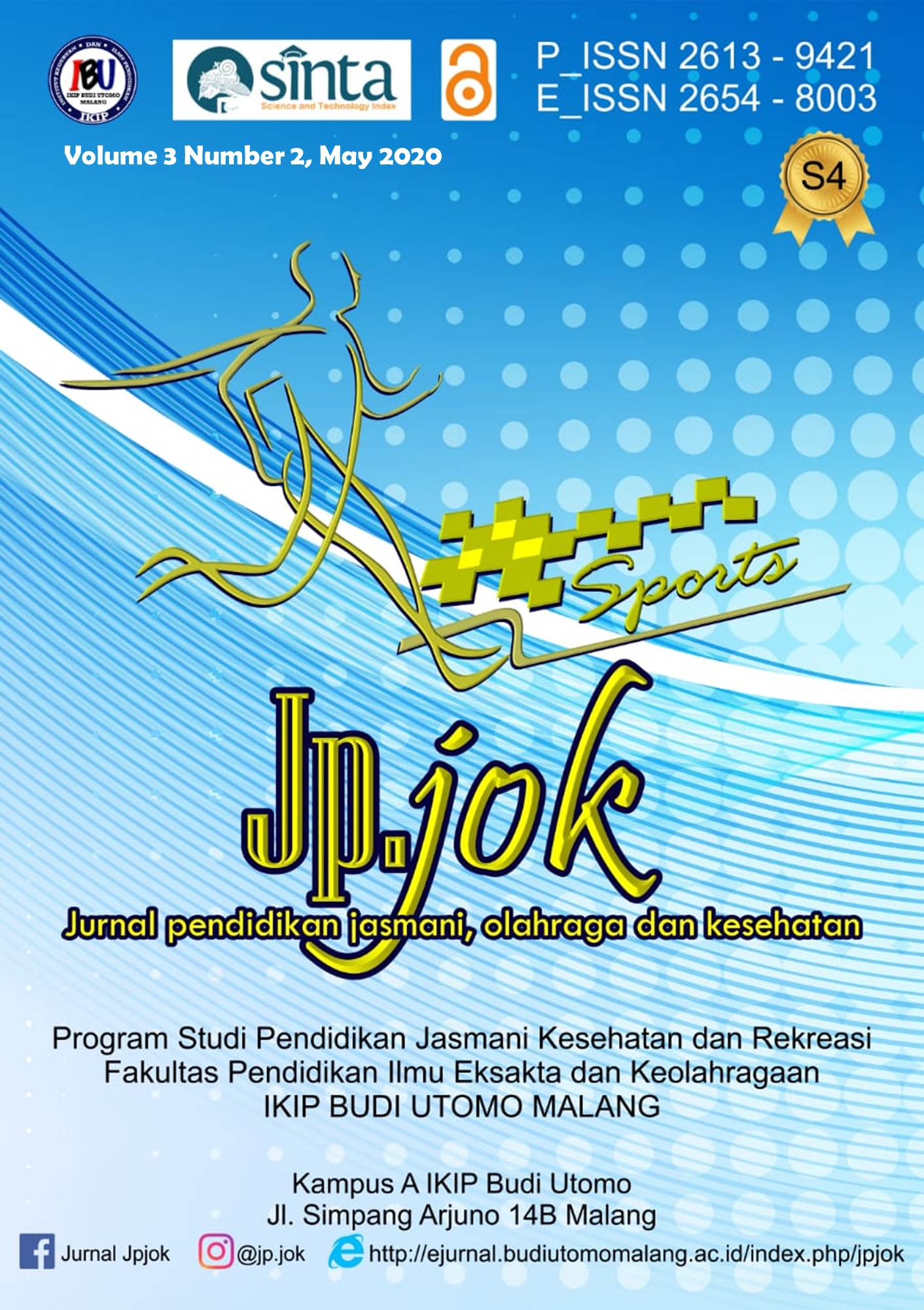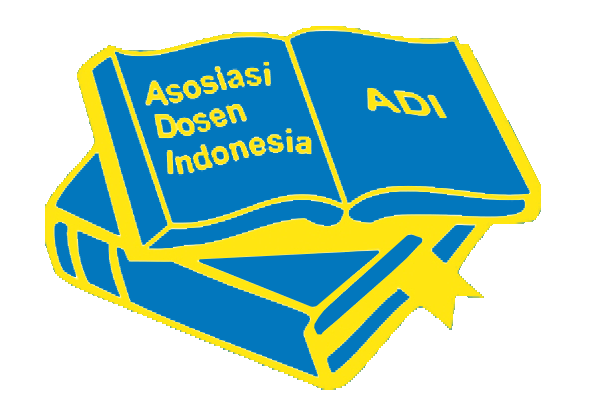The Level Of Parents Anxiety On Physical Education Activity At Lintang City Elementry School
Abstract
The purpose of this study to determine the level of parent’s anxiety on physical education lesson at Lintang City Elementary School. This research method uses a survey and collect the data by using a questionnaire. The scores obtained from questionnaires is analyzed by using quantitative descriptive analysis that converted in the form of percentages. The population the study is all parents of students and the sample is grade I , II, which they are 58 parents by using purposive sampling. The level of anxiety based on physiological factors on restless indicators during the physical education lesson is 74.3%. The level of anxiety based on psychological factors on indicators of worrying about something during physical education lesson is 71.3%, on the indicators of feeling safe and joy is 60.3%, and on the indicators of fear at 74.5%. The results of the study and discussion can be concluded that the level of parental anxiety on Physical Education was classified as high at 70.1%. in this study, the factor of parents anxiety caused by student activity, especially grade I and II as we know, during practice in this lesson so easy to get injury when the students careless.
References
Apriany, D., 2013. Hubungan Antara Hospitalisasi Anak Dengan Tingkat Kecemasan Orang Tua. Jurnal Keperawatan Soedirman 8(2). Https://Doi.Org/10.20884/1.Jks.2013.8.2.477
Arikunto, S., 2006. Prosedur Penelitian Suatu Pendekatan Praktik. Jakarta. Pt. Rineka Cipta, Jakarta.
Chaplin, J., 2006. Kamus Lengkap Psikologi. ( Terjemahan: Kartini Kartono). Pt. Raja Grafindo Jaya, Jakarta.
Cinantya, Adinda Sekar, 2014. Hubungan Terpaan Berita Kekerasan Seksual Pada Anak Di Televisi Dan Tingkat Kecemasan Orang Tua Dengan Intensitas Komunikasi Orang Tua Dan Anak. Interaksi Online, 3(1).
Depdiknas, 2006. Kurikulum Tingkat Satuan Pendidikan. Dekdikna, Jakarta.
Fathurrozi, F., Triansyah, A., Hidasari, F.P., 2020. Tingkat Kecemasan Peserta Didik Pada Pembelajaran Kayang Di Smp Islam Bawari Pontianak. Jurnal Pendidikan Dan Pembelajaran Khatulistiwa 9(1).
Fitri Anisa, D., Ifdil, 2016. Konsep Kecemasan( Anxiety) Pada Lanjut Usia. Konselor 5(2), 93-99.
Hastuti, R.P., 2016. Analisis Faktor Yang Berhubungan Dengan Tingkat Kecemasan Orang Tua Anak Thalasemia Di Rsud Ahmad Yani Metro. Jurnal Kesehatan Metro Sai Wawai 8(2), 49-54. Https://Doi.Org/10.26630/Jkm.V8i2.179
Indrayani, A., Santoso, A., 2012. Hubungan Pendidikan Kesehatan Dengan Kecemasan Orang Tua Pada Anak Hospitalisasi. Jurnal Keperawatan Diponegoro 1(1), 163–168.
Mahabbati, A., 2006. Identifikasi Anak Dengan Gangguan Emosi Dan Perilaku. Jurnal Pendidikan Nasional 2, 1.
Maksum, A., 2012. Metodologi Penelitian Dalam Olahraga. Unesa University Press, Surabaya.
Nawawi, H., 2012. Metode Peneltian Bidang Sosial. Gajah Mada University Press, Yogtakarta.
Puspitawati, H., 2010. Pengaruh Karakteristik Sosial Ekonomi Keluarga Terhadap Pola Asuh Belajar Siswa Sekolah Dasar Dan Menengah Pertama. Jurnal Ilmu Keluarga & Konsumen 3(1), 46-55. Https://Doi.Org/10.24156/Jikk.2010.3.1.46
Resti, I.B., 2014. Teknik Relaksasi Otot Progresif Untuk Mengurangi Stres Pada Penderita Asma | Resti | Jurnal Ilmiah Psikologi Terapan. Jurnal Ilmiah Psikologi Terapan 2(1), 01-20.
Setyawan, T., 2018. Pengembangan Buku Ajar Pendidikan Jasmani Dan Olahraga Melalui Pendekatan Saintifik Kelas Iv Sdn Nguter 02 Lumajang. Jp. Jok (Jurnal Pendidikan Jasmani, Olahraga Dan Kesehatan) 1(2), 24-46.
The Jakarta Post, 28 Juli, 2019. Pe Teacher Arrested For Allegedly Molesting Student. Jakarta 1–3.
The Jakarta Post, 13 Januari, 2018. Teacher Suspected Of Molesting Students In East Jakarta. Jakarta.
Umar, M., 2015. Peranan Orang Tua Dalam Peningkatan Prestasi Belajar Anak. Jurnal Edukasi: Jurnal Bimbingan Konseling 1(1), 20-28.
Widiyatmoko, F. Ari, Hudah, M., 2017. Evaluasi Implementasi Pendidikan Nilai Dalam Pembelajaran Penjas. Jurnal Ilmiah Penjas (Penelitian, Pendidikan dan Pengajaran) 3(2).
Copyright (c) 2020 Jp.jok (Jurnal Pendidikan Jasmani, Olahraga dan Kesehatan)

This work is licensed under a Creative Commons Attribution-ShareAlike 4.0 International License.
Authors retain copyright and grant the journal right of first publication with the work simultaneously licensed under a Creative Commons Attribution 4.0 International License that allows others to share the work with an acknowledgement of the work's authorship and initial publication in this journal.





.png)






